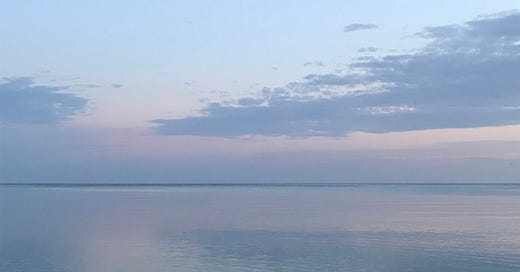“The more clearly we can focus our attention on the wonders and realities of the universe about us, the less taste we shall have for destruction.” ~ Rachel Carson, Silent Spring
One major inspiration for the first Earth Day was the publication and success of Rachel Carson’s 1962 book, Silent Spring. She asks the question, “Can you imagine a life without birds?” I know I can’t.
At the time of publication, Carson was an unassuming marine biologist with a love for poetry. She had also been diagnosed with cancer and died not long after publication, at the age of 56. Through her work, she introduced the world to the world ‘ecology,’ and inadvertently launched the modern day environmental movement.
A few years ago, I pulled a copy of Silent Spring from my bookshelf that I hadn’t yet read. I decided to give it a try, thinking it might be too dry or technical. Boy, was I wrong. While the book specifically explains how insecticides, particularly DDT, affect every aspect of the natural world, it’s also a beautiful illustration of how life is interconnected in every single way and still has a lot to teach us today. Maybe I needed to wait for that particular time in my life to fully appreciate its mastery.
The Dawn Chorus
While the number of birds has declined significantly over the past fifty years, we may have Rachel Carson to thank for the birds we still hear today. In my part of the world, bird sounds are at their peak at this time of year, as migrating birds return after a long winter and nesting begins.
Just last week, I was sitting on my porch in the late afternoon listening to the birds and heard the most beautiful song, one I hadn’t heard (or more likely not noticed) before. Using the Chirpomatic app on my phone to record the song, I discovered that this bird was a White-Throated Sparrow. Stunning.
If you sleep with an open window, you probably hear birds singing to greet the dawn. This is called ‘bird light.’ They do so at dusk, as well, although it’s a little harder to hear then because other noises distract. This “dawn chorus” peaks around May 1st where I live. Last year at this time, I got up about an hour before dawn one day and walked to the lake to hear the dawn chorus. It’s a ritual I plan to do annually.
Practice
If you’re able, rise before dawn this week and take a walk or just go outside and listen to the dawn chorus. Note how the sounds change as the sun makes its appearance. If possible, record the sound.
Which birds are present in your place in April, adding to the soundscape?
Read David Haskell’s practice from Emergence Magazine - Listening to the Language of Birds - and then spend some time sitting quietly to listen. No need to identify or distinguish between species. This is for pure listening pleasure. Jot down what you hear in terms of Haskell’s invitations. Thank Rachel Carson.
Resources
Bird Note Daily podcasts (2 minutes each) - Bird Songs of April (hear the song of the White-Throated Sparrow) and Rachel Carson and Silent Spring.
The Dawn Chorus Film by Patrick Shen





I just found out that the Dawn Chorus film by Pat Shen is free to watch for a limited time. It’s 22 minutes long. https://www.transcendentalmedia.com/screening-room-public/